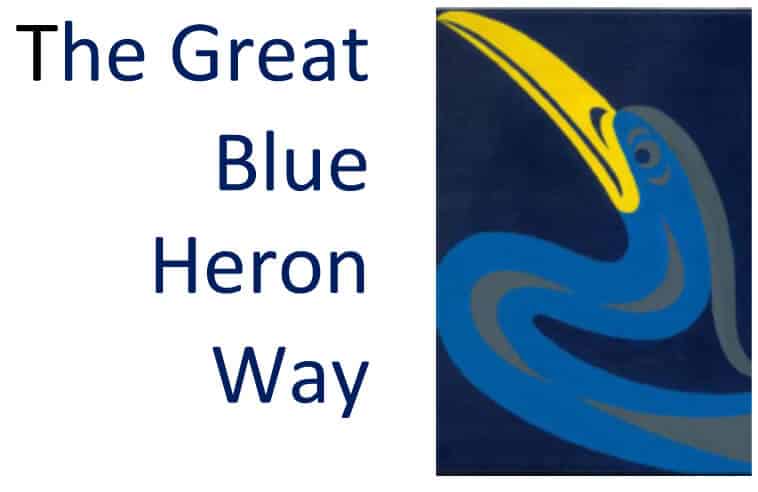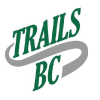
Logo: Created by Tsawwassen First Nation artist xwastenəxən (Karl Morgan), 2011. Used with permission only.
A unique vision for a proposed Great Blue Heron Way that reconnects First Nation communities was born as a result of Tsawwassen First Nation Elder xwasteniya (Ruth Mary Adams) sharing her vision and gathering community partners including the Trans Canada Trail, Experience the Fraser, and other pathway entities.
Realizing a vision for:
sməq̓ʷaʔ xeł
The Great Blue Heron Way
A reconciliation and legacy project
Indigenous connectivity using the Trans Canada Trail (TCT)
As a representative of the Trans Canada Trail, Trails BC Southwest has been inspired to believe that the proposed Great Blue Heron Way could become a national project with the TCT as a vehicle to provide the necessary connections, thus assisting the TCT to fulfill its mandate to connect communities across Canada. A legacy that would stimulate the connection of Indigenous people across the country would lend additional excitement, purpose, and credence to the TCT project. Canada150 was a moment in time to acknowledge and reflect on the contributions of the First Nations who allowed for the new arrivals to survive and prosper which, in turn, led to a confederation of provinces made up of a great variety of communities, cultures, and life styles. Hopefully, by the 50th anniversary in 2022, the Trans Canada Trail will see real evidence of such connectivity.
Locally, the plan is to seek adoption of the Great Blue Heron Way by seeing how other First Nations and the neighbouring communities would be receptive to such a vision, with Tsawwassen First Nation as the leading host for the project. Together we could work towards the following:
- Ensure that First Nations take a lead role in the project. Elder xwasteniya (Ruth Mary Adams) will continue to take a lead role in this process as the introducer of the vision.
- Bring into play National Indigenous Peoples Day, June 21, to celebrate completed connections on a yearly basis.
- Appeal to Provincial First Nations Summit(s) and the (National) Assembly of First Nations.
- See this as a motivational pathway toward Truth and Reconciliation.
Led by First Nations
- It aims to be a pathway that connects First Nation Communities. That is, the nodes along the pathway are clearly set to be First Nations Communities.
- It would challenge visitors, wayfarers, cyclists and walkers, to experience and record in some way the distinctiveness and importance of each village encountered along the way.
- It could provide a vehicle that fosters ‘truth and reconciliation’.
- It could become a pathway that would incorporate some or all the following:
- Provide Indigenous spiritual and cultural experiences
- Display First Nations Public Art including welcoming gateways at strategic locations.
- Install interpretive signage and create the ability of obtaining information via cell phone technology. The Oral First Nations history and stories could be provided at stations along the way to be read and heard using such technology.
- Offer interactive areas for both adults and children that are mostly First Nations based or led.
- Offer a First Nations protocol for acknowledging each other on the pathway to stimulate interaction.
- Foster a greater understanding of the extent of traditional territories of the respective First Nations and what that implies.
- Encourage active, healthy, and safe travel for recreation and daily journeys.
- Learn how First Nations contribute to the overall economy.
- Stimulate economic activity.
- Foster healthy relationships and respect between all residents living along the path.

